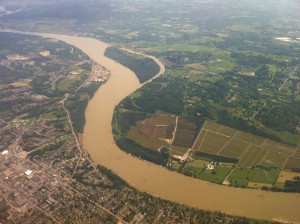A recent keynote address at a planning event got me quite intrigued at what I think is emerging as a problem in our planning profession.
This keynote basically took a list of statistics and repeated them in prose. When delivered by a respected elder of the profession, these statistics take on an air of being meaningful and mysterious – as if by their utterance, deep new insights are being delivered. The majority of the statistics provided however merely spoke to the same issues we as planners have been grappling with in the Lower Mainland of BC for many decades – major population growth of immigrants from other countries, foreign investment, pressure on the agricultural areas, etc….
Now there is of course nothing wrong with statistics, however since planners are asked by society to be the profession that looks ahead and understands what the trends are, and more importantly, what they “mean”, we need to take statistics and ask the “meaningful questions” about them.
It is quite possible that one of the reasons that the planning profession has allowed itself to become sidelined into either consultation or administration-like activities implementing existing policy rather than than being sought out to lead the discussion on future issues and options, is because the profession has not installed an imperative in its core identity of “planning as leadership” with a focus on identifying practical meaning when confronted with statistics and trends.
I suggest that in the face of a stream of statistics on changes incoming to BC’s Lower Mainland, we can identify the following questions as a “starting place” to begin to explore what the statistics actually mean to our province and to our profession:
- What does relentless population growth, industry growth, and the need for strong food and ecosystem areas mean to the current town planning and zoning models / patterns / assumptions/ methods in the Lower Mainland – specifically, how will we need to redesign the region and individual neighbourhoods to simultaneously accommodate more housing, more industry, more food production, more parks and greater ecological health – within the same piece of land?
- Since zoning is the basis for most planning – in that policy leads to zoning and real estate development then emerges from it – what new forms of zoning will be needed to double current populations, food production, industrial activity etc… in the same land within the obsolescent cycles of buildings and infrastructure in the next 50-100 years – and what local or global examples can we draw from on how to do this? Does the simplistic mantra of higher-density-mixed-use-on-a-transit-line actually really offer a model complex enough to handle the scale of this change and pressure?
- What does a steadily growing Asian / Indo population mean to the expectations and norms of social patterns, home design and uses of public space?
- Based on these trends, how does a proliferation of these projected new social/physical patterns change the “experiential, cultural and economic brand” of the Lower Mainland and its most high profile cities of Vancouver and Surrey?
- In turn then, how will this “brand change” of the major economic and social center of the province and its associated implications change things elsewhere in the province – economically and culturally?
- And when you put those trends all together (intensification of everything, changes in governance, changes in cultural makeup, etc…), how would we characterize or create a story about this macro change pattern in a manner that helps everyone understand and buy into the policy directions that must be pursued in response to the trends?
- And finally, for a profession tasked with foreseeing these patterns and leading effective responses, that are both politically and economically realistic, what does the curriculum look like for a planning school and a professional development program?
Statistics are interesting, but grappling with what they mean, especially when put together and then exploring ideas of what we can or will need to do in response – that is truly interesting!
